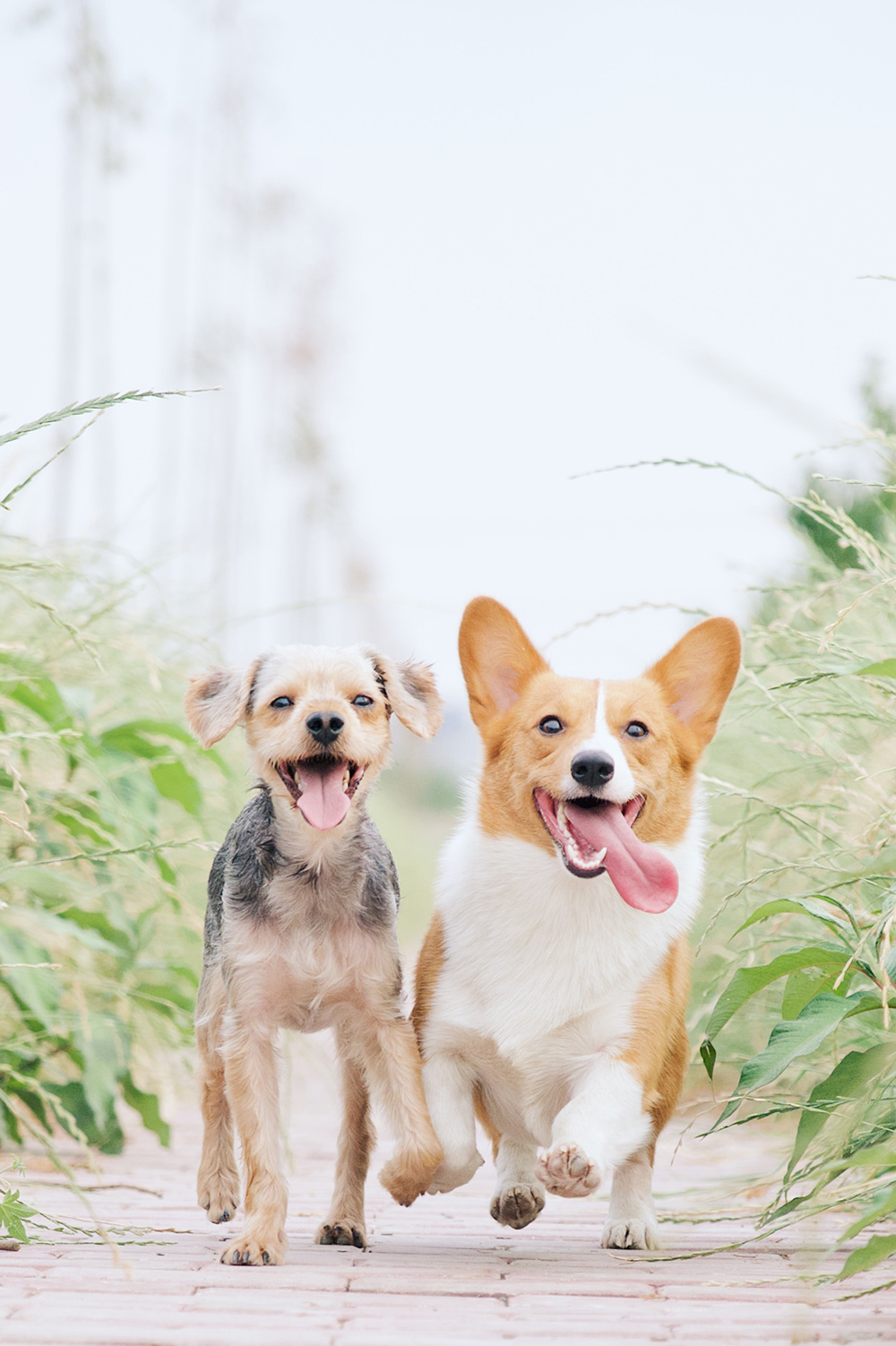 What does a dog think of a fist-bump? Or dancing? Or Monopoly? The world of human play is a surprisingly complex beast, and even the smartest of dogs probably have no idea what’s going on when two people high-five. While the mystic realm of humanity may be as indecipherable as quantum physics to dogs, the nuances of canine amusement don’t have to stay a mystery to us. All you need to understand how dogs play is to watch closely.
What does a dog think of a fist-bump? Or dancing? Or Monopoly? The world of human play is a surprisingly complex beast, and even the smartest of dogs probably have no idea what’s going on when two people high-five. While the mystic realm of humanity may be as indecipherable as quantum physics to dogs, the nuances of canine amusement don’t have to stay a mystery to us. All you need to understand how dogs play is to watch closely.
How did dog play evolve?
Way back in the day (way, way, way back), dogs were wolves. They had wolf-y needs and wolfish ambitions. They hunted in packs; not as a group of close friends like commonly believed, but more like a group of businessmen striving towards the same goal. The dogs of today, while still retaining some lupine traits, have been completely domesticated. They have become totally dependent on humans, and the man-dog relationship is more akin to parent and child than two fellow pack members.
The child/dog analogy can extend even further – dogs play just like toddlers. And just like toddlers, there comes a point when their boundless energy is just too much for you, and it’s time for that spunky someone to meet a couple new friends. If your dog isn’t tiny, the park might be a good bet, but sometimes a simple play-date with another pooch is even better.
The classic dog playdate chaos — it’s a good thing!
So you’ve set your canine companion up with a friend. The two of them do some classic sniffing, then BOOM! They’re all over each other, growling and body-slamming! You break it up, but the dogs just look at you like you’re crazy. Why? Because amidst all the action, you’ve missed one of the most important signals dogs send to each other. Much like people wink or assume a more satirical tone, dogs have a way of saying, “Everything I’m about to say and do is in jest.” It’s called a ‘Play Bow.’
The dog who wants to play gets down on their little doggie elbows and sticks their butt in the air. The dog this gesture is directed to then either refuses by walking away or accepts by engaging. Once both dogs have agreed to play, they play at full throttle!
Although they’re chasing each other around and growling, the dogs’ faces aren’t angry; their lips aren’t curled back and bearing teeth for more than an instant at a time, which means they’re having a grand old time! When dogs are playing all of their movements are nice and loose, fluidly bouncing and bounding all over each other.
Finding the line in how dogs play
Just like with children, however, sometimes the good-natured roughhousing crosses a line. One dog slams or nips the other just a bit too forcefully. The dog on the receiving end will let out a small yelp or snap at the offending pooch and leave that dog’s space. Whomever committed the faux-pas might (depending on the situation) try to re-initiate play with another bow. Ultimately, the decision to continue play is for the dogs to make amongst themselves. Sometimes the play goes on, other times enough is enough.
Although doggy-play is naturally quite rough, sometimes the play can transition directly into aggression and it is important to be able to differentiate between the two. For instance, one dog may be bit too meanly, or maybe two dogs just really don’t like each other. Their play turns from a smooth flow into quick, strobe-like pauses and consistent teeth-bearing.
When this happens, it might be time to call your dog away for a quick time-out; not as punishment, but just as a brief break from all the excitement. Again, as with children, sometimes personalities can clash, so it is important to make sure that your dog finds a friend they like and can learn to play nicely with.
Understanding how dogs play makes for fun and games
Understanding the signals you dog sends while playing can open the window to their personality and needs. Is you pooch constantly getting picked on, or are they the one who keeps accidentally crossing the line between play and conflict? Or do they simply get along with everyone they meet?
Knowing the inner workings of your friend’s doggy brain is an important part of the bonding process and play can help reveal key components of their psyche that may otherwise go unnoticed. The act of playing is also great exercise that is hard for a human to match for their canine. So if you’re unsure whether your dog’s a dashing Dalmatian or a twitchy Terrier, or if you simply need to run off some steam, get out to the nearest park and watch them play!
